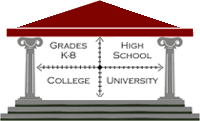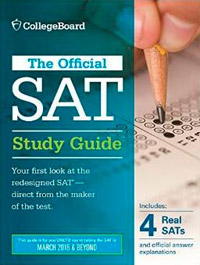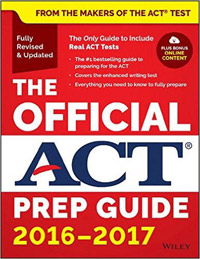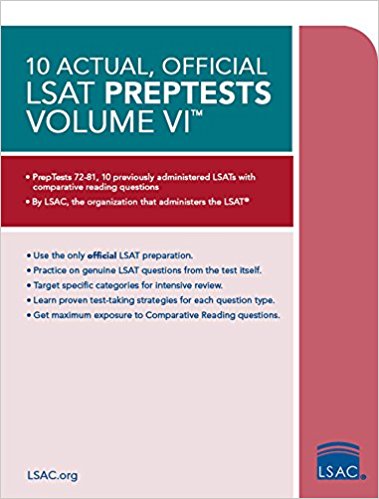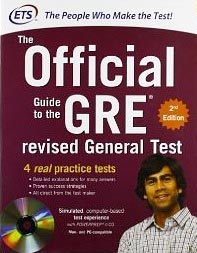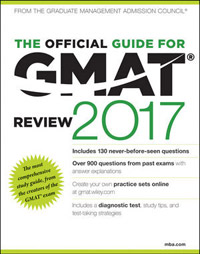SAT Critical Reading Post
Brian's Patented 6-STEP Critical Reading Technique for the SAT!
SAT Critical Reading Tips #1
The Critical Reading Section of the SAT is perhaps the most feared and most disliked section of the test. Not coincidentally, it is also usually the toughest of the three scores to improve. Math scores can be improved by memorizing formulas and learning a few basic tricks, and Writing scores can be improved by learning the most commonly tested grammatical errors, but there is no "magic fix" for the Critical Reading Section.
However, this does not mean that you cannot make huge improvements in your Critical Reading score. It just means that it's probably going to take a great deal of practice and repetition, and that you're going to have to break yourself of a lot of bad habits.
In fact, this theme of "breaking bad habits" is one that should be prevalent throughout the SAT-prep process. Even though we can often get away with bad test-taking habits, at some point or another these habits will eventually be exposed as weaknesses if we do not remedy them as we get older and those around us continue to “up the ante” as far as skill and intelligence level. Also, the SAT is a long test, like a MARATHON, so if you don't use good technique, you will mentally tire at the end. A bad pair of sneakers might not start blistering your feet until the 20th “mile” (Most students start to falter around section 7 or so…which happens 2 hours and 30 minutes into the test), but is that of any consolation when it finally happens? This is a 10-section test, so you need to be prepared for that and conserve your MENTAL ENERGY. Remember, the brain is like a muscle in that it tires more quickly when asked to carry a heavier load. But the brain also needs sustenance, so don't forget to bring a Powerbar!
Some of you will scoff, “but he's wrong…I'm different. I can do it in my head as I go.” As far as that goes, congratulations…some you probably CAN do these problems correctly in your head for a few sections. However, while you might be able to wing it for a few sections, “winging it” just doesn't work for a 3 hour, 45 minute test. To me, “winging it” means “making it up as you go along.” And to me, that's a recipe for disaster. Because when you treat every problem differently, your mind grows tired more quickly and students BURN OUT by the end of the test. Nevermind the higher number of CARELESS ERRORS you will surely make (about 100 points worth, on average). Another 200 points are possible with BETTER TECHNIQUE, making it possible for 300-point or even 350-POINT IMPROVEMENTS at the top end of the curve (I average 254-point improvements, and have had former students with up to 350-point improvements). I have also boosted students from the 2100s to nearly-perfect scores.
Once again, you must remember that TEST LENGTH is the main reason why, for the first time in years, AVERAGE SAT SCORES ARE DOWN from the past year…the test is damn long, and it's quite tricky. This is not the ACT...they're actually TRYING to make you get problems wrong by fooling you, by asking for the value of 2x when you did the problem PERFECTLY but accidentally solved for x automatically like your math teacher asks of you every day in class.
If you look around, you will see the importance of GOOD TECHNIQUE everywhere. Piano players must learn proper playing technique, or their wrists and hands will cramp up when playing a long or complicated song. Basketball players must learn to take a proper jump-shot, releasing the ball at the top of their jump, or when they move on to the next level their shot is going to be blocked! Even if the “shoot-from-the-hip” technique worked just fine in 8th grade, in 9th grade it's just not going to be as effective when you graduate to the next level and there are 19-year old, 6'11'‘ seniors with letters of intent to UCLA waiting for you in the paint! Even Tiger Woods, the greatest golf player in the world, completely remodeled his swing in the middle of his 20s, breaking it down to nothing then building it back up from scratch. Why did he make such radical changes in his swing when he was already such a talented golf player? Because he knew that in the end, he would be an EVEN BETTER player once his swing was perfected. This constant desire to improve oneself and the world around oneself is the hallmark of the truly great among us. GREAT THINKERS, GREAT ACHIEVERS and GREAT ARTISTS are never content to rest on their laurels or stop trying to find an edge or a breakthrough. They always seek improvement, no matter how intelligent or talented they already are.
Students who are taking the SAT should look at themselves no differently than these great figures once did. If you truly want to improve your score as much as possible, you need to cast aside your assumptions and test-taking tendencies (even if they worked well for you in the past!) and start looking at the test in a completely different way. You may be able to answer 80% of the questions on the SAT in your head, for example, but if you can answer 90% of the questions by writing everything down, don't you think it's worth the extra effort? (In fact, it's actually LESS EFFORT! (There will be more on this in a later blog.) Remember, you don't get any extra points for degree-of-difficulty, and should always “practice how you play,” as any coach or teacher will agree. This means that you should never take shortcuts on the homework or skip a problem because you think to yourself, "I already know how to do that." You don't learn by watching someone do something, or listening to someone else tell you how to do it. You learn by actually practicing the methods yourself! The techniques I teach you may seem a bit unfamiliar at first (and thus uncomfortable), but once you become familiar with them and practice my techniques enough times, they are sure to become much more effective than your previous approach. Hundreds of my students have already used these techniques to great effect, and I am constantly fine-tuning my techniques to reflect any changes in the test.
One of the problems with the young tutors from the NAME-BRAND, test-prep companies (my favorite moniker for them is McTutoring) is that they give you a set of workbooks and techniques, but they never explain to you why to use these techniques. While this approach might sometimes work for students, it is usually ineffective for students in the upper half of scorers, because these students are curious to want (and deserve) an explanation as to why that material is relevant, instead of a bunch of canned practice problems that AREN'T EVEN FROM REAL SATs.
All I'm saying is, you need to decide for yourself whether to take my FREE advice. Don't worry—skepticism in authority is a good quality to have, so long as you give respect to those around you who deserve your respect. For example, I have no problem listening to authority figures, but I'm not going to trust someone blindly. They must first EARN my trust, or they will not be able to COERCE (make a flashcard if you don't know it) my trust just because they are older or more powerful than I. This freedom to choose one's own path is why, despite all of our country's faults, I love being an American…it's still a free country and you've all got the right to say what you want to say, the right to do as you choose, and the right to decide whether or not to follow my FREE SAT CRITICAL READING ADVICE AND TIPS! Then when you do decide to take my advice, ace the SAT, get into the college of your dreams and run for president of the USA, I can decide whether to vote for you! Hey, you never know! (By the way, saying what you want and doing what you want is MUCH easier if you're a college graduate first! Just a reminder.)
So you'll notice that whenever I provide a tip or technique, I will also explain why this technique is helpful. Then you can decide for yourself whether or not you want to take my advice. Remember, part of being an adult is learning how to make decsions for yourself and then deal with the consequences…you can choose to carefully read this advice, or you can choose to go back to eating Cheetos (though I would suggest that a compromise is possible). Still, it's your decision. But if I can say anything in my defense, it's that I have a RIDICULOUS AMOUNT of SAT KNOWLEDGE, much like those of you who play video games 24/7 are RIDICULOUSLY GOOD at them. Simply put, I tutor students in SAT preparation nearly every day, I have read nearly every SAT PREPARATION BOOK online and in print, and I have spent the last decade DISSECTING THE SAT for students across the country, so I am an SAT EXPERT by trade. Did I mention that my SAT advice is completely FREE, while everyone else CHARGES FOR IT? Free is good!
OK, here we go:
GENERAL CRITICAL READING TIPS FOR THE SAT
-EITHER SKIM THROUGH OR SKIP THE PASSAGE ENTIRELY THE FIRST TIME THROUGH. By now, almost everyone has heard some version of this piece of advice, but despite seeming too good to be true, it really is a fact! This is because reading the passage beforehand is usually little more than a huge waste of time. Students who do this usually read the passage line-by-line, focusing on every detail, only to realize by the time they've reached the end of the passage they don't remember much of anything! So when they finally move on to the actual questions, they have to go back to the passage and re-read the text anyway. Why not just go directly to the questions (or at least skim the passage quickly) and give yourself twice as much time to answer the questions? You'll also avoid getting "stuck" on a section of the passage that is unimportant—remember, there is a lot of information presented in the passages, but the questions only ask about some of this information, not all of it.
-Another good reason to skim or skip over the passage is that the questions appear in rough chronological order. That is, the first question refers to the beginning of the passage, the last question refers to the end of the passage, etc. So by answering the questions one at a time, and reading the corresponding passages, you are actually reading the entire passage anyway!
-Remember, Critical Reading has no order of difficulty (link), so you don't have to answer the questions in any particular order. Feel free to skip harder questions or questions that you don't understand. After all, if you don't understand the question or don't know the meaning of a key word (link) in the question, you're probably not going to get it right anyway! The worst thing that can happen is that you skip too many and end up at the end of the section before time has expired. If this happens to you, it's no big deal—just backtrack and answer some of the questions you skipped.
-Questions with line references are generally the best questions to start with, because they tell you exactly where to look for the answer. However, remember that the key to the answer is not always in the EXACT lines that the question points you to. You often have to read a few lines above or below to find the answer. You should be able to determine whether to look above or below after reading the text.
-On the other hand, main idea or general questions should be saved for the end because they require knowledge of the entire passage. Other good questions to skip or at least save for later (because they are usually difficult and time-consuming) are the ROMAN NUMERAL questions (I,II,II etc.) and the "capital letter" (LEAST/EXCEPT/NOT) questions.
-Smart students: DON'T THINK SO HARD! Every year I see very intelligent students and excellent writers getting lousy scores on the SAT Critical Reading practice tests because they get too creative with the answers, and try to make too many connections, imagining hypothetical situations that could SOMEHOW make the answer true. I hate to admit that this works so well, but for this test, DON'T THINK POSITIVELY AND CREATIVELY. Instead you should BE NEGATIVE (meaning try to DISPROVE answers, not CHOOSE answers), and look at things with a crucial eye, not an optimistic one. Think of it this way: 80% of the answers you consider are going to be WRONG, so it's better to distrust an answer than to trust it. This isn't called CRITICAL Reading for nothing, you know!!
-With the short passages, you can get away with reading the entire passage because it's so short that you usually will be able to retain everything. However, it makes sense to read the questions first, just to give yourself an idea of what you should be paying attention to. For example, if the first question asks you about lines 8-12, you can place a bracket in the margins next to those lines. This tells you to read that section carefully. If the question mentions any specific text, go ahead and underline that text as well. The truth is, most of the stuff you read you WON'T be tested on, so don't get stuck on minor details.
-The main reasons that students give when asked why they performed poorly on the Critical Reading section of the SAT are that they become "lost" in the passage, or frustrated, or confused, or just plain bored. This may seem like a lot of reasons, but in my opinion, they are all the result of one root cause: when students try to "bite off more than they can chew" by jumping straight to the answers after quickly reading the text. Critical Reading questions should not be seen as one long question—each question should be perceived as a number of small questions to answer. By breaking the process of answering the question into smaller bites, we make it much less stressful for the student, and you're much more likely to answer the question correctly. Because if you lose your train of thought (which happens frequently to students in this section), you will not have to start over from scratch. You will simply have to repeat the last step.
The secret is in realizing that within any Critical Reading question lie 6 ESSENTIAL STEPS the test-taker must take before choosing an answer. Here are my recommended steps for any critical reading question:
BRIAN'S PATENTED 6-STEP CRITICAL READING TECHNIQUE
1) READ THE QUESTION (I know, duh). If it's a long or complicated question, don't worry yet about what it's asking—just note the line reference and any specific language quoted from the text. ALL YOU NEED TO KNOW AT THIS POINT IS WHERE TO READ!
2) READ FOR UNDERSTANDING. Go to the specific lines that the question mentions and read that portion of the text. Some companies will suggest that you read "5 lines above to 5 lines below," but I find this technique to be unnecessarily confusing. Start with the EXACT LINES that the question refers to, then decide whether to read up or down for more information. You will usually be able to decide this from the context of the passage. For example, if the passage mentions a pronoun such as "it," that suggests you should read above to figure out what "it" is referring to!
During this step, you don't need worry about answering the question just yet. Just worry about trying to understand what the passage is saying. Another useful tip when reading for understanding is to try reading the topic sentence of whatever paragraph to which the question is pointing. Good writers know that topic sentences should effectively summarize the message of the paragraph, so if you're looking for the main idea of a line or lines, look at the topic sentence of that paragraph.
3) RE-READ THE QUESTION. This time, focus on what the question is truly asking. One of the things you'll notice about Critical Reading questions is that they are rarely actual questions! Don't take my word for it—look in the Official Guide to the SAT and see how many question marks you can find. Not many at all, right? This is because the vast majority of Critical Reading "questions" are not questions at all, but incomplete statements. And the answer choices are not answers—they are possible endings to the statement! So what does this mean for you? It means that you should usually FOCUS ON THE END OF EACH QUESTION, because this is where the question CONNECTS TO EACH ANSWER CHOICE.
Once you've got in mind what the question is truly asking for, another trick you can use is what I call "bringing the question to the passage." This means writing a short summary of the question in the margin next to the passage, so your eyes (and your fingers when it's on the other page!) don't have to jump back and forth between the two. For example, if the question says "the author mentions the quote from Thoreau in order to " you could write "why mention Thoreau?" in the margins next to the text. It only takes a second to write down and it saves you a lot of hassle and/or page turning.
(By the way, speaking of TURNING PAGES, that's by far one of the LOUDEST NOISES you're going to hear on test day, but it's probably not the ONLY ONE that's going to DISTRACT YOU! For more on the SAT and HOW TO HANDLE TEST-DAY DISTRACTIONS, click here.)
4) RE-READ THE PASSAGE, LOOKING FOR THE ANSWER IN YOUR OWN WORDS, OR (EVEN BETTER!), THE ANSWER IN THE TEXT. UNDERLINE KEY TERMS (ADJECTIVES, ADVERBS, VERBS). This is a very important part of the process, and a very powerful technique. Most students skip this step completely, preferring to peek ahead at the answers. It is VERY IMPORTANT THAT YOU DO NOT LOOK AT THE ANSWERS YET! Just as with the sentence completions, you will just confuse yourself if you start looking at the answer choices before you even have an idea of what the answer is. Avoid this temptation at all costs.
Instead, see if you can answer the question in your own mind. If so, write it down so you don't forget! Or, you may be able to find certain lines in the passage that provide the answer to the question. Underline these lines. Now, in the same way that you did with the SENTENCE COMPLETIONS, you have given yourself a SPECIFIC answer to look for (or at least as specific as possible!)
Now, finally, on to step 5
5) PROCESS OF ELIMINATION. Now that you have an answer written down, or underlined on your page, you can go ahead and start looking at the answers. Some will obviously be wrong, and others will be more vague.
Again, it helps to think of the correct answer as the "HARDEST TO DISPROVE" instead of the "best" answer. When you look for the right answer, you start looking for reasons to make something true, and when that happens, that's where the SAT does a great job of TRICKING most students. You see, when you are trying to MAKE an answer choice work, you start getting CREATIVE (for life this is a good quality but for the SAT, not so much!), and try to think of ways that the question COULD possibly be right. This is not the best way!
Instead, you should be looking at the SPECIFICS of the question (strong adjectives, adverbs, verbs etc) and trying to determine why it COULD NOT be right. This explains why on many questions (especially MAIN IDEA questions), the more general question is the answer. For example, what's easier to disprove: that it SOMETIMES rains on cloudy days, or that rain is a DIRECT RESULT of thunder? Obviously the second one, right? Well that's because of the qualifying words "sometimes" and "relatively," as opposed to the stronger (and thus more committal) word, “direct.”
Think about it: how could you ever DISPROVE that something "SOMETIMES" happens? It's nearly impossible because you would have to show that something NEVER HAPPENED EVEN ONCE, which is almost impossible. But to DISPROVE that something ALWAYS happens, well, all I need to do is find one example to the contrary and I've proved the theory wrong. And that's why the SAT is more about LOGIC than any other factor.
Allow me to provide an example. In the OFFICIAL SAT STUDY GUIDE, open your book to page 393, #19 and take a look at the question and answers. Give it a shot yourself.
What happens to many students in this scenario is that they eliminate it down to A and C. Many will choose C because it looks good and is in fact quite close to the answer (except it's the other way around—should be " Europeans about Native Americans."). But think about it: answer choice A means exactly the same thing as answer choice C, except answer choice A is much more vague and therefore very HARD TO DISPROVE. Therefore A is the answer. Cool, huh? ☺
6) PROCESS OF SELECTION /ANSWER VERIFICATION. After process of elimination, you'll probably narrow it down to at least three answers, probably two, or maybe you've even found the answer that you suspect is the correct one. NOW you can finally focus on VERIFYING the correct answer. So how do you do this? It's all about LANGUAGE.
THE BEST ANSWER IS THE ANSWER WITH THE LANGUAGE CLOSEST TO THAT OF THE PASSAGE. LOOK FOR PARALLEL STRUCTURE AND MEANING BETWEEN THE ANSWER CHOICES AND THE TEXT YOU'VE UNDERLINED OR THE ANSWER YOU'VE WRITTEN DOWN IN THE BLANK SPACE AFTER THE QUESTION. DON'T BACKTRACK UNLESS YOU HAVE TO. TRUST THE TECHNIQUE, IT WORKS!!
SOME FINAL ADVICE FOR STUDENTS WHO OFTEN GET IT DOWN TO TWO ANSWERS BUT STILL ARE CHOOSING THE WRONG ONE:
Try not to choose answers that LOOK OR SOUND GOOD but are irrelevant to the question. Just because something is TRUE doesn't mean it's the right answer. Take another peek at the END OF THE QUESTION and the BEGINNING OF THE ANSWER, and remember that these are THE MOST ESSENTIAL PARTS TO ANY CRITICAL READING QUESTION.
I invented this PATENTED 6-STEP CRITICAL READING TECHNIQUE myself, after nearly a decade of tutoring students for the SAT. My current and former students have incredible Critical Reading Score Improvements to show for it, and you can read all about my other SAT-PREP TECHNIQUES here for FREE in MY BLOG (OK, I admit it: I do save a few of the tricks for paying customers!). So if you learned a lot just reading this, or your scores improved, imagine how much you could learn by WORKING WITH ME IN-PERSON OR ONLINE, or working with one of our OTHER TUTORS!
(By the way, if you're still struggling with Critical Reading, you might want to ask yourself: is your LACK OF VOCAB CAPACITY getting in your way? Remember, vocabulary knowledge is key on the Critical Reading section as well as the Sentence Completions. Subscribe to my VOCABULARY NEWSLETTER for more examples of my memorization tricks in action, using the most essential vocabulary words for the SAT. )
|

